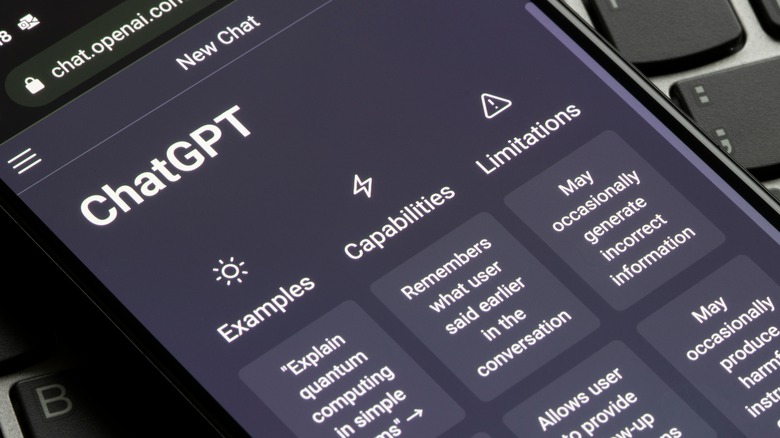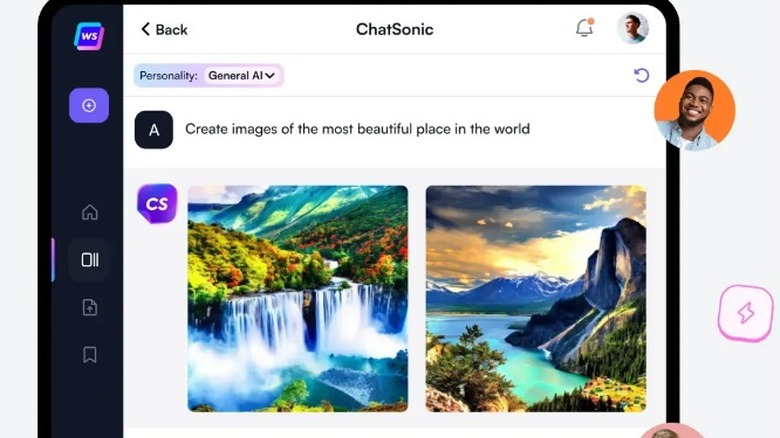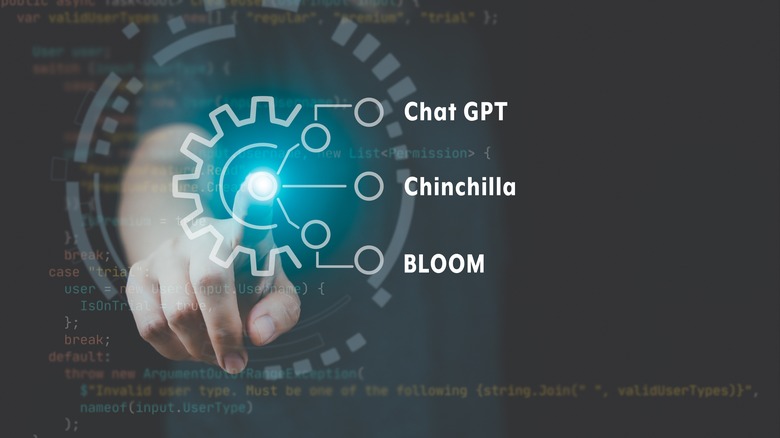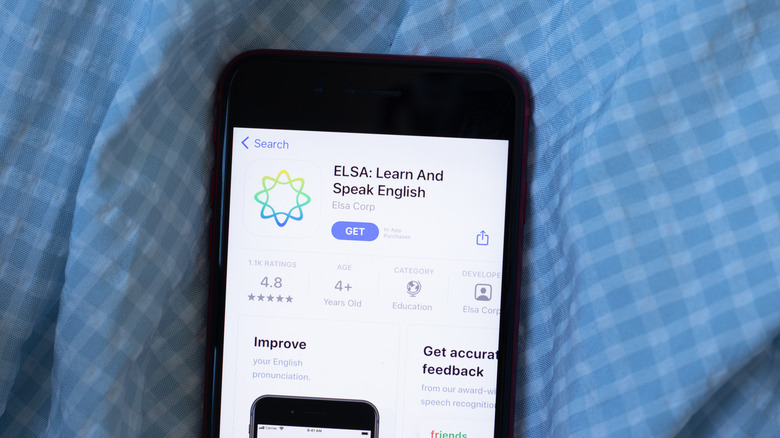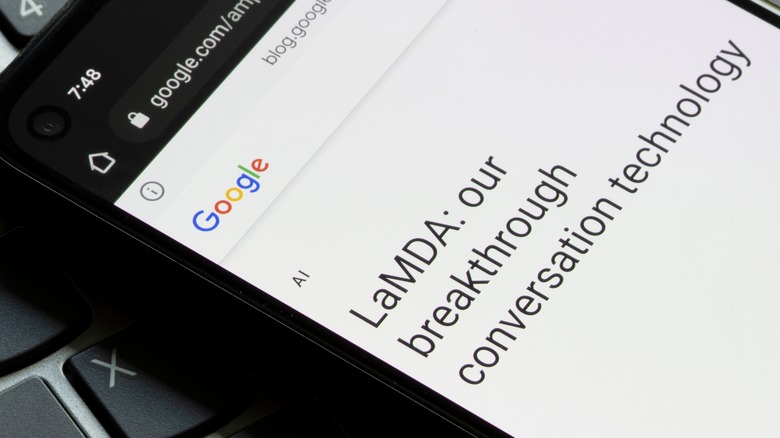5 ChatGPT Alternatives That Aren't Being Talked About Enough
ChatGPT has been making headlines recently. Now, the concept of plagiarism has been torn up by the newest update to the artificial intelligence system. Wired reports that the AI writing system is throwing university level essay writing and grading into chaos for institutions. Today's GPT 3.5 variety can generate lengthy pieces of novel text based on simple prompts; it can even develop responses to one-word inputs.
For some college students, this has been a godsend. Business Insider notes that chatbots have the ability to make collegiate education fairer for non-native English speakers. Others have started to use these tools as a means to generate a starting point for essays or overarching workflow of ideas that will translate into their own writing as their research progresses. The Atlantic reports that one professor even assigned his class an essay to be written using the program.
In truth, while some consider the sudden burst of prominence that these AI systems are enjoying to be a threat to education, the utility will simply act as a transformation. For many, ChatGPT and other systems will mean the reduction of busywork, while for others it will open up new possibilities that were closed off simply due to a lack of financial, geographic, or linguistic resources.
Still, while ChatGPT is the talk of the town today, a wealth of market players makes for a better overall product and technology. There are many other systems out there that are worth exploring.
ChatSonic
ChatGPT is limited still by its offline connectivity. The current version remains as a beta test, and its functionality is somewhat limited as a result. ChatSonic doesn't suffer from the same limitations (via WriteSonic). WriteSonic, the ChatSonic parent organization, notes that the AI system features voice command recognition, a mobile app, and integrations with Google's search functionality. These are all features that aren't available to ChatGPT users.
ChatSonic can also create artwork, something that still is yet to be unveiled with the ChatGPT platform. These features make ChatSonic a potent AI tool that can accomplish a huge volume of tasks for the average and advanced user alike.
Augustman notes that the primary difference is in ChatSonic's capacity to access the internet. This means that ChatSonic responses are up to date and can be backed up by sourcing. One major gripe among ChatGPT users is the fact that the platform does its best to provide accurate and informative information, but the responses generated can sometimes be incorrect or misleading because of a lack of resources that would ensure accurate responses at all times.
One final thing to keep in mind is that ChatSonic is limited to 25 responses per day without a premium subscription. This may not be a problem for casual users, but for those who rely on the system to provide a wealth of feedback on numerous topics, those 25 AI generations can go in a flash.
BLOOM
BLOOM is a fascinating entry into the world of AI text generators. According to Analytics Insight, The platform can create responses in 46 natural languages and 13 programming languages. Big Science reports that the tool was designed specifically to help researchers understand the way that language is used to communicate and create ideas.
The direct use case for the program's text generation capacity, according to its creators, is designed to help explore language characteristics across a global reach. With the programming languages added into the mix, BLOOM can offer itself as a programmer's training and advancement tool as well. Big Science notes that the AI tool is the product of over 1,000 researchers across 250 unique institutions and 60 countries.
It has resulted as a vast neural network that helps researchers utilize a data set to explore a variety of problem areas. Toward Data Science reports that BLOOM is one of the most important new AI models available because of its open-access framework ant the multitude of languages it can work within. The tool can translate language, solve complex math problems, and create code with ease.
ELSA Speak
ELSA Speak (an acronym for English Language Speech Assistant), is an AI tool designed to help people speak more clearly and perfect their English language use. ELSA Speak notes that its AI tool is the "world's best way to improve your English language pronunciation." The feature helps language learners perfect their tone and pace, and the AI system can even detect minute differences in these features of speech that foreign learners often have trouble recreating.
ELSA Speak makes use of an adaptive learning system that helps the AI tool get smarter with each new use. The AI coaches learners and helps them pinpoint specific issues in their speech pattern. With real time recognition and feedback built into the app, learners are always able to see where they began and how far they've come.
ELSA Speak notes that 90% of users see noticeable improvements in pronunciation, and 95% report an increase in confidence surrounding English language use. The designers also report that 27 hours of study with the application mimics an equivalent learning experience to an ESL speaking course offered in a typical American collegiate setting.
LaMDA (Language Model for Dialog Applications)
LaMDA is Google's offering in the world of AI conversation technology (via Google). Google notes that one of the most difficult features of nuanced search is the nature of language itself. A query can involve literal or figurative language, informality, and much more.
These make traditional search parameters difficult to perfect. LaMDA is the product of Google's research into conversational AI features. TechCrunch notes that in August of 2022, Google unveiled the AI Test Kitchen, including a working LaMDA product that users could help add nuance to through use.
One unique feature of the LaMDA AI was reported by The Washington Post in June 2022. Blake Lemoine, one of Google's engineers who worked on the project think that the AI may have "come to life." Observer notes that Lemoine was able to place increased social pressure on the AI through conversation that might make a human feel somewhat under the gun.
He finally got the machine to suggest a religion to convert to, breaking of the program's core tenets. Whether or not these features characterize the AI as sentient remains to be seen, but the result is certainly a rich text and idea generator that can provide a blossoming conversation to someone interacting with the system.
Character AI
Character AI is another fascinating option for a user looking to branch away from ChatGPT. This AI is based on neural language models, and can take on personalities as it progresses through a conversation with the user, according to Character AI. The primary use case is in developing various personas for chat interfaces.
The AI can replicate the "character" of a vast library of individual personalities and respond in a way that makes sense for the situation. This is immensely useful for writers who are finding a blockage in scripts or character development, for one. With the help of Character AI, a writer might be able to recapture the voice of the protagonist with the help of dialogue designed around a similar personality.
For instance, if you were sitting down for dinner with Chris Rock and Chris Christie, you might expect wildly different responses to a statement about a recent argument you had with someone at work. The same would also be true when speaking with your parents or two different siblings. Character AI is built to emulate different character traits to change up the conversation. Digital Trends reports that Character AI offers personalities that can fit virtually any mold, and selecting the type of conversation partner you're looking for is as easy as a simple search.
